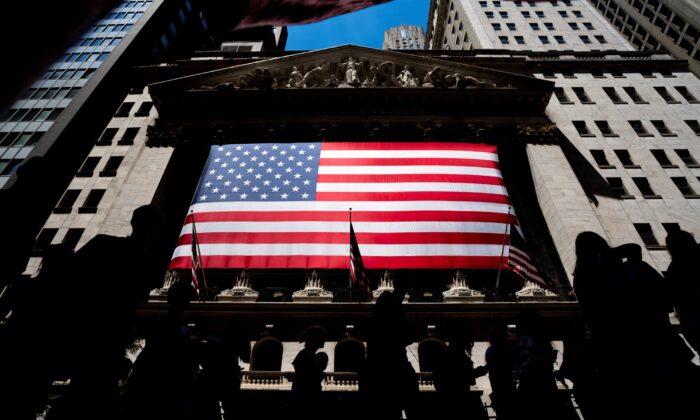Wall Street is essentially flat before the opening bell Tuesday with Americans heading to the polls to vote in the midterm elections that are being heavily influenced by inflation, with more data on that front arriving this week.
Futures for the S&P 500 moved 0.16 percent higher, and the Dow Jones Industrial Average rose 0.13 percent.
Control of the U.S. House and the Senate are up for grabs with huge numbers of voters expected to turn out, potentially leaving the U.S. government split between Democrats and Republicans.
“Look for markets to trade political headline spin rather than substance,” Stephen Innes of SPI Asset Management said in a commentary.
Every seat in the U.S. House of Representatives is up for election this year, along with about a third of the U.S. Senate. On the line is control of both houses of Congress, currently under Democratic leadership.
Voters are also electing governors in most states. They’ll be in office in 2024 when the next presidential election happens and could affect election laws or vote certifications. Many state legislative and local authorities also are on the ballot.
A divided government would likely bring gridlock rather than big, sweeping policy changes that could upset tax and spending plans. Historically, when a Democratic White House has shared power with a split or Republican Congress, stocks have seen stronger gains than usual.
Analysts say a strong performance by Democrats in the elections could lead to increased spending to help the economy that might fuel inflation and leave the Federal Reserve obliged to continue to hike interest rates to get prices under control.
Higher rates put slow the economy by making it more expensive to buy a house, car, or anything else on credit, though they take time to take effect. Rate hikes could bring a recession, and they tend to drag on prices for stocks and other investments.
With economists forecasting recessions for many economies as an inevitable side effect of the effort to quash inflation, sharp cutbacks in spending might hurt, rather than help, some analysts say.
“On the one hand, the prospect of less spending could be viewed as aiding the inflation fight but on the other, the economy could be headed for recession, and inaction in government won’t help the situation,” Craig Erlam of Oanda said in a report.
Economists expect a U.S. government report on Thursday to show the consumer price index rose 8 percent in October from a year earlier, slightly lower than September’s 8.2 percent inflation rate.
A fourth straight month of moderating inflation from June’s peak of 9.1 percent could give the Federal Reserve leeway to loosen up a bit. The Fed has said it may soon dial back its rate hikes to half a percentage point, after it pushed through four straight mega increases of three-quarters of a point.
Earnings reports are also causing share prices to swing.
The reporting season for summertime profits is roughly 85 percent done, and S&P 500 companies are on track to deliver growth of a little more than 2 percent. Analysts are forecasting a drop in S&P 500 profits for the final three months of the year, of nearly 1.5 percent.
In Europe at midday, Germany’s DAX added 0.3 percent, while the CAC40 in Paris was flat after being down early. In London, the FTSE 100 slipped 0.2 percent.
In Asia, Tokyo’s Nikkei 225 gained 1.3 percent to 27,872.11 on strong earnings reports. The Kospi in Seoul advanced 1.2 percent to 2,399.04 and Australia’s S&P/AXS 200 gained 0.4 percent to 6,958.90.
Hong Kong’s Hang Seng sank 0.2 percent to 16,557.31, while the Shanghai Composite index shed 0.4 percent to 3,064.49. Thailand’s SET gained 0.5 percent. India’s markets were closed for a holiday.
In other trading, U.S. benchmark crude oil lost 58 cents to $91.21 per barrel in electronic trading on the New York Mercantile Exchange. It lost 82 cents to $91.79 per barrel on Monday.
Brent crude, the international pricing standard, gave up 33 cents to $97.59 per barrel.
The U.S. dollar slipped to 146.50 Japanese yen from 146.63 yen. The euro dropped to 99.94 cents from $1.0016.
On Monday, the benchmark S&P 500 rose 1 percent and the Dow industrials 1.3 percent. The Nasdaq composite added 0.9 percent.





